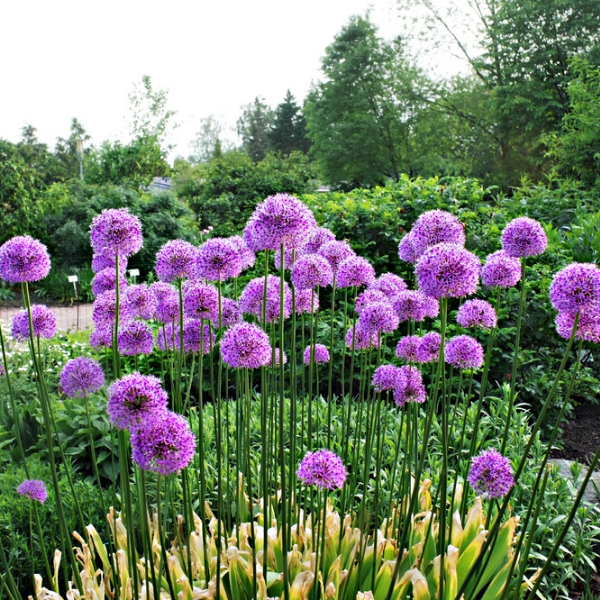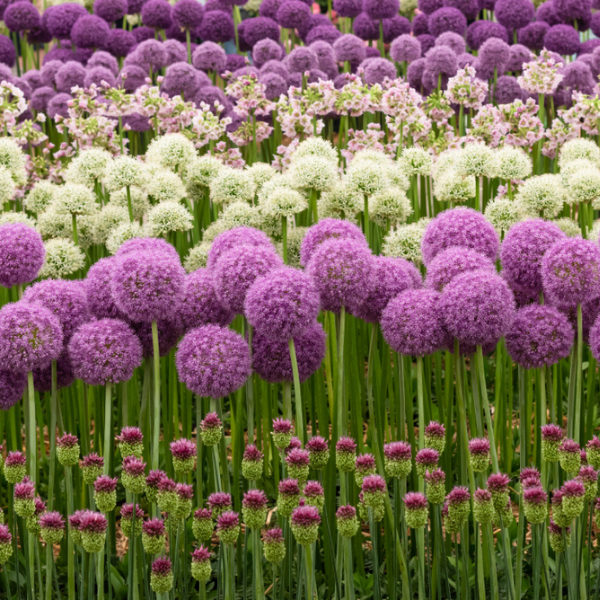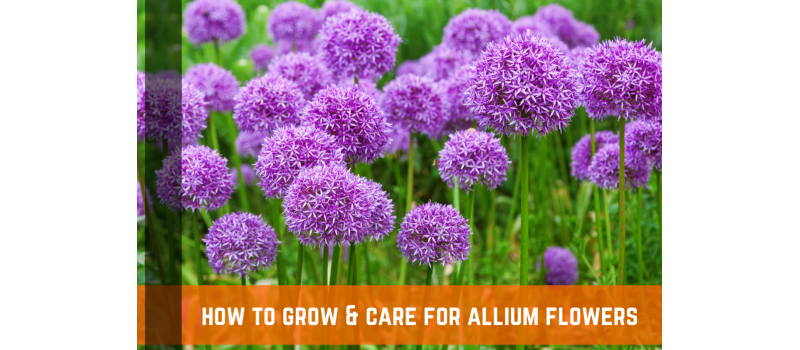The ultimate early summer flower is provided by allium flowers. These deer and rat resistant flowers are simple to grow and will last for years in the garden with little care. Their distinctive shape and long-lasting blossoms set them apart in the garden. Allium are resistant to deer and rodents and may be cultivated in a variety of soil conditions.
Although the allium plant is linked to the common garden onion, don't let that stop you from planting it for its lovely blossoms. In fact, a show of enormous, early-to-late season blooms and minimum allium care are just two of the reasons to incorporate the decorative allium plant in the garden.
Learn how to cultivate allium flowers, which are related to chives and garlic and are used as a repellent for a variety of insects and wildlife that you may want to keep out of your garden. Allium flowers emerge above the foliage and come in a variety of colors, including white, pink, purple, yellow, and blue. Allium flowers have circular heads that range in size from a couple to several inches in diameter.
Allium Flower Varieties
Allium Flowers come in a wide variety of cultivars and varieties that differ greatly based on your choice. Here are some of the most common and favorites:
Corkscrew Allium
Drought-tolerant corkscrew allium makes a good edging plant. It has loose corkscrew-like blue-green leaves. Late July is when the flowers bloom.
Purple Sensation
Purple sensation grows with a diameter of 2 to 4 inches bloom in early June, shortly after the late tulips. Purple Sensation's robust stems reach 24 to 30 inches in height.
Ozawa Allium
A clump-forming plant that reaches 18 to 20 inches tall. Its flowers don't open until late September or October, making it one of the last perennials to bloom. It attracts bees. Another autumn-flowering late-bloomer.
Globemaster Alliums
Because Globemaster Alliums are so big, you may utilize them as a focal point in a garden filled with low-growing plants. They don't spread on their own because they have sterile seeds, and you can divide the clump every few years to get more plants.
From early spring to midsummer, the majestic 7-8 inch purple heads grow on three to four-foot stalks. They have a strong, sweet aroma.

Where To Plant Alliums
Perennial Gardens
Late in the spring, along with the last tulips and shortly before irises and peonies, most alliums bloom. Flowers that persist for weeks and float over the garden like balloons. Both flowers and leaves fade away after blossoming, leaving summer perennials to take center stage.
Rock Gardens
Alliums flourish in well-drained spaces between rocks, making them ideal for rock gardens. Smaller species, such as Allium flavum and Allium karataviense should be used.
Containers
Many alliums thrive in containers, either alone or in combination with other plants. When the flowers bloom, move the planter to a prominent location where the flowers will be visible.
Allium Flower Growing Conditions
Allium flowers are hardy to zone 4 and require very little care. They will thrive in almost any soil that is well-drained. Alliums love the sun and thrive when they have access to it throughout the day.
Alliums are drought-tolerant plants that love to be grown in a dry environment. They are not bothered by any significant diseases or insect pests. You won't have to worry about rats or deer because they appear to dislike the taste of onions, decorative or otherwise.
Keep in mind that you may only grow alliums in the fall. Many flowers are easily available at most garden centers, but alliums are not. You will want to procure your allium seeds as early as possible so that when it comes time for planting, you are ready to go.

Planting Allium Flowers
Allium bulbs are easy to grow. These bulbs should be sown when still dormant in the autumn. The bulbs are tough and can withstand a variety of circumstances. The roots should emerge once planted, signaling the start of the blooming season at the end of spring. Follow these steps to plant your allium flower:
- Find a location with well-draining soil and good sun coverage.
- Dig a hole 4 inches deep and place the bulb in it with the tip facing up.
- Cover the bulbs with soil, leaving the tip slightly exposed.
- Water thoroughly after planting. Regular watering is needed to encourage growth.
- If you are growing one of the taller cultivars, you will need to stake the plant to keep it from falling over.
Maintenance
Watering
Provide alliums with evenly moist, but not soggy, soil during the growing season. Reduce watering during the dormant season, when excess moisture might promote decay. Keep any dogs or pets away from newly planted trees or flowers.
Nutrition & Fertilizer
At the time of planting, add bone meal to the planting area. To keep the soil healthy in subsequent years, apply a layer of compost.
Pests & Disease
Alliums are pest-resistant and will even repel garden pests like aphids. However, thrips might be an issue at times. They also attract helpful insects including bees, parasitic micro wasps, and hoverflies, which aid in the eradication of insect pests.

How To Care For Alliums After They Flower
You can either remove or leave the wasted heads when alliums have finished flowering. The seed heads are considered an attractive decorative feature by many gardeners. They can last till early fall, depending on your climate.
Alliums with large heads, such as Globemaster, generate few viable seeds. Purple Sensation will reseed if the conditions are perfect. Simply remove the seed heads after the blooms fade and before the seeds develop to avoid a carpet of seed heads. Herbaceous alliums are available in addition to bulbous alliums. These plants have a big root ball and bloom repeatedly each year.
Alliums grown from bulbs use their foliage to create energy for the following year's flowers. As a result, it's critical to let these plants die organically. The leaves may usually be removed once it has yellowed and withered. Trim wasted blooms from herbaceous alliums using scissors once they've stopped flowering. This will keep the plants tidy and may even induce a second flowering flush.
Caring for Freshly Cut Allium Flowers
Trim when the blossoms are about 1/3 to 1/2 way open for long-lasting, freshly cut allium blooms. Always cut stems at an angle with sharp, clean pruning shears. After trimming the stems, immediately plunge them into a bucket of cool, clean water.
Trim away any spent blossoms and foliage that will be submerged in the vase's water before putting in a vase. Change the water every two to three days or more regularly to avoid an onion smell.

